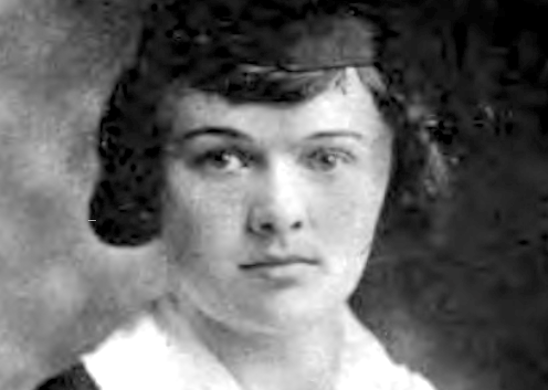Even as William Faulkner Struggled, Ursula Parrott Thrived
Parrott is forgotten and Faulkner is famous. This is so much more than a matter of quality, which is why we need biography.

‘Ex-Wife’
By Ursula Parrott
McNally Editions, 232 pages
‘Becoming the Ex-Wife: The Unconventional Life and Forgotten Writings of Ursula Parrott’
By Marsha Gordon
University of California Press, 312 pages
“Ex-Wife” and “The Sound and the Fury” were both published in 1929. The first novel sold more than 100,000 copies and the second less than a tenth as much. Parrott and Faulkner had the same publisher, Hal Smith, who had a keen eye for genius and for groundbreaking books.
Parrott is forgotten and Faulkner is famous. This is so much more than a matter of quality, which is why we need biography to delve into an era that made Parrott a fortune from writing books, magazines stories, and movie scripts, while Faulkner languished — praised by certain discerning critics but with only occasional lucrative assignments in Hollywood and Saturday Evening Post short fiction paydays.
Marsha Gordon makes a compelling case for Parrott’s artistry and continuing relevance. Today, “Ex-Wife” is every bit as engaging and thought-provoking as it was in 1929. The novel can be read as a period piece about the 1920s, the emergence of flappers and independent career women, but it is also an anatomy of a marriage and a divorce that takes a searing look at a conflicted woman.
Patricia is talented and intent on husband, home, and children. Her husband rejects her when she tells him she has been unfaithful. Peter has also been unfaithful, and she has forgiven him, but he spurns her because he had thought of her as “clean” — the word he uses repeatedly.
Patricia struggles on her own, as Parrott did after her own divorce, in a culture that made the author’s efforts to right herself gossip-fodder for syndicated columnists like Walter Winchell. “Ex-Wife” is autobiographical,” but it is more than that.
Nowhere in Gordon’s biography do I find a character like Lucia, another ex-wife who advises Patricia on how to negotiate a world of predatory men but also deals with her own weaknesses, including a desire to be supported by a man. The novel’s passages on female friendship are as profound as Patricia’s efforts to become her own woman in the company of the men she desires.
Marsha Gordon has done a diligent job of finding every bit of correspondence by and to Parrott, but what is missing is the voice of the man to whom Parrott wanted to dedicate her life: Hugh O’Connor, the journalist. He let her down, always, never marrying her, demanding, as Gordon observes, a relationship on his terms — which meant he could pick it up and drop it whenever he liked.
Yet here is what fascinates me: Why did Parrott not save O’Connor’s letters, and why did he save hers? She wrote good letters, worth saving, to be sure, but why would O’Connor, who never seems to have acknowledged his bad behavior, leave behind Parrott’s berating of his failings? Did her eloquent letters scourge him even though he could not act properly? It is not Gordon’s fault, but O’Connor’s voice is dearly missed in this biography.
Now, why is it that Parrott is no longer read? She did not take care of herself and fell into destitution in her last decade, doing nothing to preserve her literary estate, including her papers and manuscripts. She did not manage herself or her work the way writers like Faulkner did, and she was profligate and irresponsible. By the 1940s, she no longer could meet magazine deadlines or produce the big novels she kept promising to deliver.
Ms. Gordon’s biography is also the story of a single mother who believed that single parenting was not only possible but in some instances preferable to conventional family life. Whatever her failings, she made it possible for her son to have a Harvard education. Marc Parrott’s excellent afterword about his mother is included in the McNally edition.
Ms. Gordon does something else that is quite shrewd: She has a concluding chapter, after Parrott has died, which concentrates on her subject’s literary legacy. The story of Parrott’s life is over, but her writing lives on, even if we don’t yet know it.
Mr. Rollyson is the author of “Female Icons: Marilyn Monroe to Susan Sontag.”
Correction: Marsha is the first name of the biographer. The name was incorrect in one mention in an earlier version.

